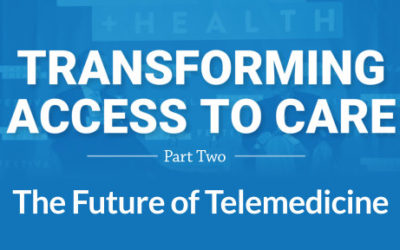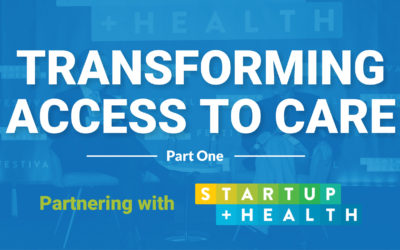
CMS Shakes Up Telemedicine, Will Pay for More Services [via MedCityNews]
Great advances in the telehealth industry are being made for the upcoming year. On November 2nd the Centers for Medicare and Medicaid Services announced their final rule for the 2018 Medicare Physician Fee Schedule. The document mentions the increase in physician payment rates as well as the CMS’s plan to pay for more telehealth services. The multiple new codes cover instances including lung cancer, health risk assessments, psychotherapy, chronic care management, and interactive complexity. This rule has the power to transforming access to care and make it easier for providers to get reimbursed for these services.
Article taken from MedCityNews, author Erin Dietsche:
On Thursday [November 2nd], the Centers for Medicare and Medicaid Services released a final rule for the 2018 Medicare Physician Fee Schedule.
The lengthy (as in 1,653-page) document outlines numerous changes. For one, it increases physician payment rates by 0.41 percent for 2018 compared to this year.
But a less frequently highlighted part of the rule is what it does for telemedicine.
CMS will be paying for more telehealth services. The agency created multiple new codes, which cover instances around lung cancer, health risk assessments, psychotherapy, chronic care management and interactive complexity.
As a press release notes:
To strengthen access to care, especially for those living in rural areas, CMS is transforming access to Medicare telehealth services by paying for more services and making it easier for providers to bill for these services. Improving access to telehealth services reflects CMS’ work to modernize Medicare payments to promote patient-centered innovations.
Additionally, CMS said it is finalizing separate 2018 payment for CPT code 99091, which details certain remote patient monitoring.
Some, including Connected Health Initiative Executive Director Morgan Reed, were pleased with the changes. He praised CMS’ efforts regarding enabling doctors to utilize remote patient monitoring tools. In a statement, Reed noted:
These new rules are an important step forward for America’s connected health innovators, doctors, and most importantly patients. Until now, connected health technologies have been effectively locked out of the most important part of America’s healthcare system, Medicare and Medicaid.
Previous CMS rules created serious disincentives for doctors to consider new technologies. Together with our advisory board, CHI pushed for newly enacted rules that finally level the playing field for innovators, giving doctors and patients the chance to take advantage of the best technologies available.
Others, such as American Hospital Association Executive Vice President Tom Nickels, weren’t quite as excited. He stated:
We are also supportive of the agency’s policies to make payment for new telehealth services, although we urge a more expansive approach toward telehealth coverage.
What do you think of the CMS’s new rule?
About SimpleVisit
SimpleVisit is a video service which allows patients and providers to connect over the video platform of their choice. With SimpleVisit providers are able to deliver on-demand visits to patients over any device or platform they have available to them. For more information on SimpleVisit and on how we are enabling providers to host virtual visits check out www.SimpleVisit.com
Transforming Access to Care — Part 2
SimpleVisit’s Goal to Transform Healthcare: Access to care should be as simple as answering a call. Here at SimpleVisit, we are on a mission to significantly improve the implementation of telemedicine. The use of virtual care is steadily growing into a common...
Transforming Access to Care
Part 1: Partnering with Startup Health With well over 100 people crowding in a small venue past secret service checkpoints, there was much anticipation as we awaited the arrival of our “special guest.” This was just a week ago in a coffee shop turned conference center...
Transforming Access to Care — Part 1
With well over 100 people crowding in a small venue past secret service checkpoints, there was much anticipation as we awaited the arrival of our special guest. This was just a week ago in a coffee shop turned conference center in San Francisco; where we joined...


